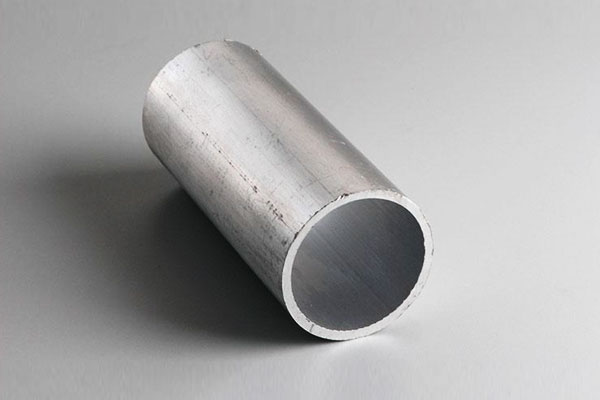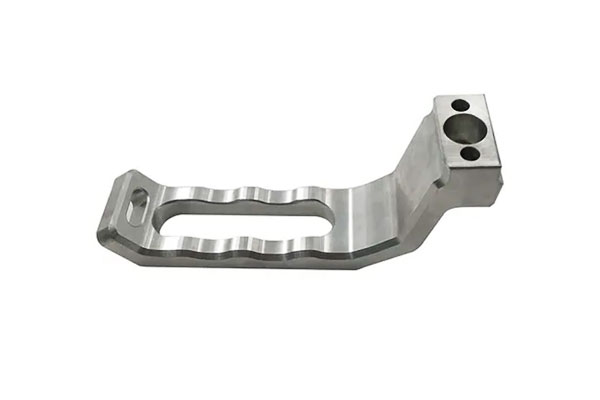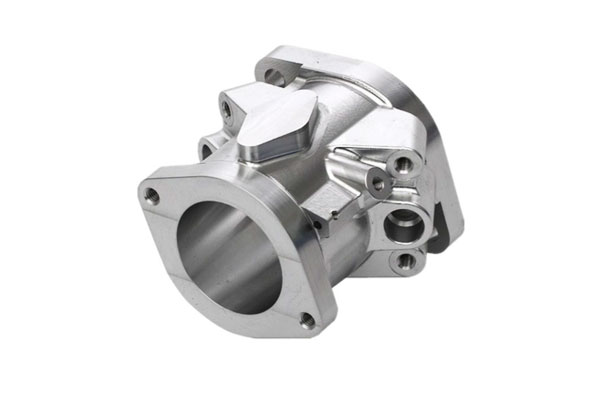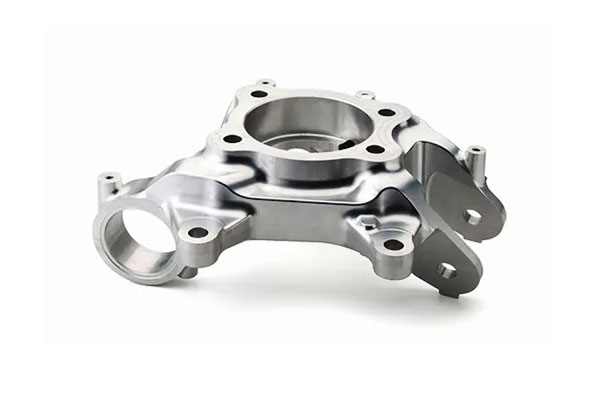1. Introduzione
Among the most widely used alloys are 5052 vs 6061 leghe di alluminio, each serving distinct needs in various industries.
While both share aluminum’s lightweight and corrosion-resistant nature, their chemistries and processing methods yield markedly different mechanical properties and fabrication behaviors.
In questo articolo, Confrontiamo 5052 E 6061 aluminum alloys from multiple perspectives—metallurgical, meccanico, termico, corrosione, fabbricazione, costo, and application use cases.
Understanding the advantages, Limitazioni, and ideal application scenarios of each alloy enables informed material selection for projects in marine, automobile, aerospaziale, elettronica, e altri settori.
2. Chimica in lega & Metallurgical Basis
5052 (UNS A95052) E 6061 (US A96061) are both wrought leghe di alluminio, but they belong to different series and are engineered for distinct performance characteristics.
Understanding their composizione chimica provides insight into their mechanical properties, Resistenza alla corrosione, e formabilità.

Tavolo: Chemical Composition and Role of Alloying Elements
| Elemento | 5052 (% in peso) | 6061 (% in peso) | Ruolo & Metallurgical Significance |
|---|---|---|---|
| Alluminio (Al) | Bilancia | Bilancia | Primary metal; provides light weight and corrosion resistance. |
| Magnesio (Mg) | 2.2 - 2.8% | 0.8 - 1.2% | Increases strength via solid solution hardening; Migliora la resistenza alla corrosione. |
| Silicio (E) | ≤ 0.25% | 0.4 - 0.8% | In 6061, combines with Mg to form Mg₂Si, enabling precipitation hardening. Migliora la castabilità. |
| Cromo (Cr) | 0.15 - 0.35% | 0.04 - 0.35% | Improves corrosion resistance and controls grain structure during processing. |
Rame (Cu) |
≤ 0.1% | 0.15 - 0.40% | Significantly improves strength and machinability, but decreases corrosion resistance. |
| Ferro (Fe) | ≤ 0.4% | ≤ 0.7% | Present as an impurity; high levels can reduce ductility and corrosion resistance. |
| Manganese (Mn) | ≤ 0.1% | ≤ 0.15% | Enhances strength and wear resistance; helps refine grain structure. |
| Zinco (Zn) | ≤ 0.1% | ≤ 0.25% | Typically a minor impurity; excessive Zn can reduce corrosion resistance. |
| Titanio (Di) | - | ≤ 0.15% | Refines grain structure during solidification; improves toughness and strength. |
Key Metallurgical Differences:
- 5052 Alluminio (from the 5xxx series) È Non-trattabile and relies primarily on magnesium for solid-solution strengthening.
It offers excellent corrosion resistance, Soprattutto negli ambienti marini, due to its high Mg content and absence of copper. - 6061 Alluminio (from the 6xxx series) È trattabile con calore, utilizing a combination of magnesium and silicon to form Mg₂Si precipitates,
which significantly improve strength after aging treatments (PER ESEMPIO., Temperatura T6).
Tuttavia, it contains more copper than 5052, which can slightly compromise its corrosion resistance.
3. Proprietà meccaniche di 5052 vs 6061 Leghe di alluminio
Choosing the right alloy depends heavily on mechanical performance, especially when strength, duttilità, and fatigue resistance are critical.
Below is a side-by-side comparison of 5052-H32 and 6061-T6:
Tabella di confronto delle proprietà meccaniche
| Proprietà | 5052-H32 | 6061-T6 | Osservazioni |
|---|---|---|---|
| Resistenza alla trazione (MPA) | 210 - 260 | 290 - 340 | 6061-T6 offers higher overall strength. |
| Forza di snervamento (MPA) | 130 - 195 | 240 - 280 | Better load-bearing capacity in 6061. |
| Allungamento a pausa (%) | 12 - 20 | 8 - 10 | 5052 is more formable and ductile. |
| Durezza di Brinell (Hb) | ~ 60 | ~ 95 | 6061 is significantly harder. |
| Modulo di elasticità (GPA) | ~ 70 | ~69 | Very similar stiffness. |
| Forza a fatica (MPA) | ~117 | ~ 96 | 5052 performs better under cyclic loading. |
| Forza di taglio (MPA) | ~138 | ~207 | 6061 has greater shear capacity. |
Intuizioni chiave:
- 5052 offerte excellent ductility and fatigue resistance, making it ideal for applications involving flessione, formazione, O vibrazione, such as fuel tanks and marine structures.
- 6061, Soprattutto nel Temperatura T6, fornisce higher strength and hardness,
making it better suited for applicazioni strutturali where load-bearing and machinability are priorities, such as aerospace frames or automotive components.
4. Fisico & Proprietà termiche di 5052 vs 6061 Leghe di alluminio
Beyond mechanical performance, aluminum alloys must be evaluated for how they respond to temperature, electrical load, and thermal cycling, Soprattutto nell'aerospaziale, elettronica, and transportation sectors.

Fisico & Thermal Properties Comparison
| Proprietà | 5052 Alluminio | 6061 Alluminio | Osservazioni |
|---|---|---|---|
| Punto di fusione (° C.) | 605 - 650 | 582 - 652 | Slightly higher melting point in 5052. |
| Conducibilità termica (W/m · k) | ~138 | ~167 | 6061 conducts heat more efficiently. |
| Conducibilità elettrica (% IACS) | ~ 35 | ~43 | 6061 offers better electrical conductivity. |
| Coefficiente di espansione termica (µm/m · k) | 24.9 | 23.6 | 5052 expands slightly more under heat. |
| Stabilità termica | Moderare | Alto | 6061 retains strength better at elevated temps. |
5. Resistenza alla corrosione & Comportamento superficiale
Resistenza alla corrosione generale
- 5052 is often considered one of the most corrosion-resistant aluminum alloys in marine and industrial environments due to its high Mg content and Cr additions.
It withstands seawater, salt spray, and many chemical exposures with minimal attack. - 6061 has good general corrosion resistance but is inferior to 5052 in chloride-rich or highly acidic/basic conditions.
Anodizing improves 6061’s durability, but in raw form, 6061 is more prone to pitting in salt spray tests.

Accorciamento & Corrosione della fessura
- 5052-H32 shows minimal pitting in 5 % NaCl salt-spray tests beyond 500 ore if surfaces are properly finished.
The stable passive film (Al₂o₃ + Mg-rich oxides) repels chloride ions effectively. - 6061-T6 begins showing small pits under similar conditions after ≈ 200 hours unless a hard-coat anodize or conversion coating is applied.
Crevice corrosion can initiate under tight joints or gasketed areas.
Cracking della corrosione da stress (SCC)
- 5052 has virtually no SCC susceptibility even under sustained tensile loads in a chloride environment.
- 6061-T6 is moderately susceptible to SCC if subjected to tensile stresses above 75 % of yield in chloride media.
Sovrappolamento a T4 O T5 temper reduces SCC risk but also lowers peak strength.
Surface Treatment Recommendations
| Lega | Recommended Finishes | Corrosion Benefits |
|---|---|---|
| 5052 | Anodizzare (Tipo II), Powder Coat, Pvdf, Chromate Conversion | Seal porosity and increase chloride resistance |
| 6061 | Hard Anodize (Tipo III), Chromate Conversion, e-Coat, Paint | Dramatically improves pitting resistance and longevity |
6. Saldabilità & Fabbricazione di 5052 vs 6061 Alluminio
Welding Characteristics
- 5052 saldature exceptionally well with all common fusion methods (GMAW/MIG, Gtaw / turno).
It exhibits minimal hot-cracking, E 5183 O 5654 filler rods yield weld metal retaining ≈ 90 % of base-metal strength. - 6061 can be welded by GMAW/TIG as well, Ma heat-affected zones (Haz) in T6 will soften to ≈ 50 % of base strength (≈ 145 Resa MPA).
Per ripristinare la forza, UN T4 → T6 re-aging cycle is often required: weld in T4, then solution treat and artificially age.
Common fillers are 4043 (Al-Si) for crack resistance or 5356 (Al-mg) for higher weld strength; each affects HAZ differently.

Machinabilità
- 5052 has a machinability rating of approximately 40 % (relative to the 2011 aluminum baseline).
It machines with moderate speeds (150–200 m/i) using carbide tooling.
The higher Mg content contributes to slight work hardening during cutting; feed rates should be conservative to avoid built-up edge.
Surface finishes of RA 1,6-3,2 µm are achievable in 2–4 mm depth-of-cut operations. - 6061 punteggi 60–70 % machinabilità. It accepts higher cutting speeds (200–300 m/i) and maintains excellent surface finish (RA 0,8-1,6 µm).
Carbide tools with positive rake angles and flood coolant maximize tool life. Swarf tends to break into small chips, facilitating safe evacuation.
Formazione & Flessione
| Lega & Temperare | Minimum Bend Radius | Note |
|---|---|---|
| 5052-H32 | 1 × spessore | Altamente formabile; spring back moderate; ideal for deep draw and roll forming |
| 6061-T6 | 3–4 × thickness | Formabilità limitata; cracks if bent too sharply; requires annealing (T4) for tight bends |
| 6061-T4/T651 | 1.5 × spessore | Improved formability but must be re-aged to T6 for strength restoration |
- 5052-H32 can be bent to a radius as small as 1× its thickness without cracking, making it ideal for complex stamped or drawn parts (PER ESEMPIO., serbatoi di carburante, marine panels).
- 6061-T6 is more prone to cracking under tight bend radii; typical safe bend radius is 3–4× spessore.
To achieve tighter radii, parts are formed in T4 poi T6-reaged post fabrication.
7. Trattamento termico & Hardening of 5052 vs 6061 Alluminio

5052 Alluminio (Non-Heat-Treatable)
- Strengthening Mechanism:
-
- Relies entirely on Il lavoro indurimento (strain-hardening) E soluzione solida of Mg.
- Max attainable UTS is ~ 241 MPa in H34, after extensive cold working.
- Tempering Options:
-
- H32: Work-hardened to approx. 228 Mpa uts.
- H34: Further cold work yields ~ 241 MPa UTS but reduces ductility to ~ 5 %.
- Trattamento termico:
-
- Ricottura (O temperamento) at 300–400 °C softens the material (Ra ~ 105 MPA) to restore formability.
- No precipitation hardening possible; any heat treatment beyond anneal only reduces strength.
6061 Alluminio (Trattabile con calore)
- T4 (Soluzione trattata con calore + Naturally Aged):
-
- Processo: Solution treat at ~ 530 °C for 1–2 h, quench in water, then age at room temperature (~7 days).
- Proprietà: Uts ~ 240 MPA, yield ~ 145 MPA, allungamento ~ 18 - 22 %.
- Utilizzo: Ideal for complex bending before final aging.
- T6 (Soluzione trattata con calore + Artificially Aged):
-
- Processo: Solution treat at ~ 530 °C for 1–2 h, spegnere, then artificially age at 160 °C for 6–8 h.
- Proprietà: Uts ~ 310 MPA, yield ~ 275 MPA, allungamento ~ 12 - 17 %.
- Utilizzo: Standard for maximum strength requirements in structural components.
- T6511 (T6 with Stress Relief):
-
- Processo: After T6, a low-temperature stress relief (120 ° C per 2 H) reduces warping during subsequent machining.
- Proprietà: Essentially identical to T6 but with minimal residual stress.
8. Costo, Disponibilità & Catena di fornitura
Raw Material Pricing
- 5052 typically commands a 5 - 10 % Premium over generic 6xxx alloys due to higher Mg content and specialized rolling processes.
As of early 2025, 5052 sheet is priced around $3.50–$4.00/kg, depending on thickness and temper. - 6061 is one of the most widely stocked alloys; its raw material cost hovers around $3.00–$3.50/kg for sheet and plate.
Extrusions may carry a slight surcharge but remain abundant and competitively priced.
Forme di scorta & Tempi di consegna
| Form Factor | 5052 Disponibilità | 6061 Disponibilità | Tempi di consegna |
|---|---|---|---|
| Foglio / Coil | 0.5 - 50 mm (1 ft × 10 ft sheets) | 0.5 - 200 mm (1 ft × 8 ft sheets) | 2–4 settimane |
| Piatto | 3 - 150 mm di spessore (limited H34 stock) | 3 - 200 mm di spessore (T6511 widely stocked) | 1–3 settimane |
| Extrusions / Bar | Limitato; chiefly flat bars and angles | Extensive—profiles, tubi, rods in many sizes | 2–6 settimane |
| Tubo / Pipe | Common—preferred for marine tubing | Common—structural and hydraulic tubing | 1–3 settimane |
9. Applicazioni di 5052 vs. 6061 Leghe di alluminio
5052 Aluminum Applications:
- Marino Industria: Boat hulls, deck structures, serbatoi di carburante (excellent saltwater corrosion resistance)
- Settore automobilistico: Serbatoi di carburante, interior panels, scudi di calore
- Architettura & Costruzione: Roofing panels, rivestimento, grondaie, Caratteristiche decorative
- Cibo & Beverage Equipment: Serbatoi di stoccaggio, kitchen worktops, sanitary containers
- Elettronica & Recinti: Housings and cabinets for corrosive or outdoor environments
- Segnaletica & Display: Highway signs, billboards (due to excellent formability and weather resistance)
- Industria chimica: Containers, ducting, and tubing for mildly aggressive chemicals

6061 Aluminum Applications:
- Industria aerospaziale: Aircraft structures, wing panels, componenti del carrello di atterraggio
- Automobilistico & Trasporto: Telaio, parti di sospensione, driveshafts, truck frames
- Attrezzatura industriale: Structural frameworks, sistemi di tubazioni, valvole, e carri armati
- Recreational Products: Cornici per biciclette, climbing gear, camping tools
- Machined Parts: Precision components requiring strength and corrosion resistance
- Applicazioni marine: Structural parts in boat building where higher strength is needed
- Costruzione: Ponti, scaffolding, Strutture portanti
10. What Is the Difference Between 5052 vs 6061 Leghe di alluminio?
| Aspetto | 5052 Alluminio | 6061 Alluminio |
|---|---|---|
| Serie in lega | 5xxx (Al-mg) | 6xxx (Al-mg-si) |
| Elementi di lega primaria | Magnesio (2.2%–2,8%) | Magnesio (0.8%–1,2%), Silicio (0.4%–0,8%) |
| Forza | Forza moderata (Trazione: ~ 215 MPA) | Alta resistenza (Trazione: ~290 MPa in T6 temper) |
| Saldabilità | Eccellente | Bene (may require post-weld heat treatment) |
| Resistenza alla corrosione | Eccellente (especially in saltwater/marine environments) | Bene, but less than 5052 |
| Formabilità | Superiore (ideal for bending, rotolando, disegno) | Moderare (less formable than 5052) |
| Machinabilità | Giusto | Eccellente (especially in T6 condition) |
| Calore curabile | NO | SÌ (can be heat treated to T6, T651, ecc.) |
| Applicazioni tipiche | Marino, serbatoi chimici, copertura, segnaletica | Aerospaziale, automobile, parti strutturali, Componenti lavorati |
| Costo | Generally lower | Generally higher |
11. Tendenze emergenti & Direzioni future
New Alloy Variants
- 5052 Modifications: Research into slight zinc or rare-earth additions aims to further boost corrosion resistance in acidic or alkaline environments without sacrificing formability.
- 6061 Hybrids: Development of 6061 compositi—embedding nanoscale SiC or Al₂O₃ particles—seeks to raise stiffness and wear resistance while maintaining conventional 6061’s ease of processing.
Produzione additiva
- 6061 in PBF (Fusione in polvere): Recent advances achieve near-100 % density and Uts ~ 280 MPA in laser-melted 6061, though cracking remains a challenge.
In-situ heating strategies (200–300 ° C.) during build help mitigate thermal stresses. - 5052 in DED (Deposizione di energia diretta): 5052’s non-heat-treatable nature simplifies DED processing;
early trials show Buona saldabilità of powder-blown deposits, with mechanical properties ~ 90 % of wrought 5052 when optimized.
Innovazioni di ingegneria di superficie
- Advanced Anodizing:
-
- Pore-free hard anodize SU 6061 rese > 600 H salt-spray resistance, abilitazione 6061 use in marine settings.
- Nano-sealing techniques per 5052 add self-healing properties, extending life in harsh chemical exposure.
- Hybrid Coatings: Polymer/ceramic nanocomposite overlays deposit on 5052 vs 6061 aluminum to provide both low friction and corrosion barriers for sliding components in automotive and industrial equipment.
12. Conclusione
Entrambi 5052 vs 6061 aluminum alloys offer distinct advantages and limitations:
- 5052 eccelle Resistenza alla corrosione, Formabilità, E applicazioni marine, with a maximum UTS of approximately 241 MPA in H34.
Its non-heat-treatable nature limits peak strength but simplifies fabrication. - 6061 outperforms with a Struttura più alta envelope (≈ 310 MPa UTS in T6), age-hardening capability, E superior machinability,
rendendolo ideale per strutturale, automobile, E aerospaziale uses—albeit at the cost of requiring heat treatment and additional corrosion protection in aggressive environments.
Material selection should balance mechanical demands, ambiente di servizio, Metodi di produzione, e costo del ciclo di vita.
When corrosion or extreme formability rules, 5052 si distingue; when strength and stiffness are paramount, 6061 is the alloy of choice.
Ongoing advances in alloy composition, produzione additiva, and surface engineering promise to further refine these alloys, ensuring they remain cornerstones of modern engineering design.
LangHe offre affidabile, Componenti in lega di alluminio di alta qualità che soddisfano severi standard internazionali.
Contattaci Oggi per discutere del tuo prossimo progetto.


